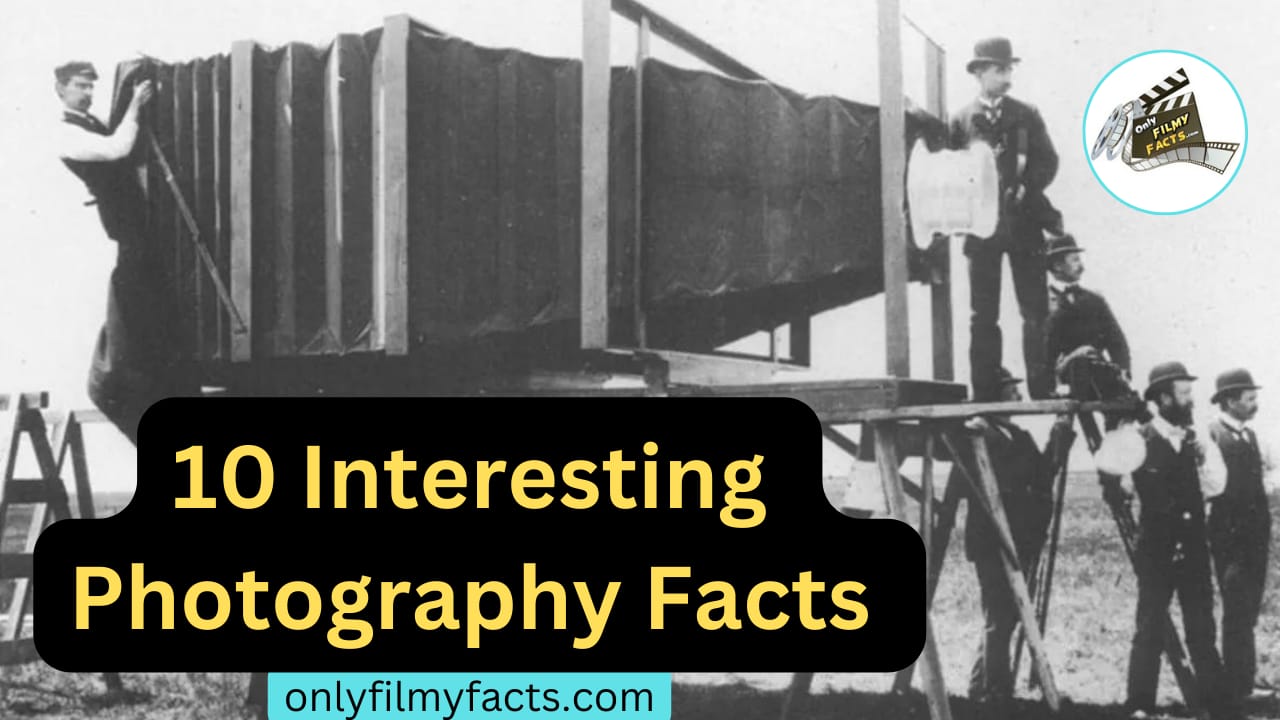From the weird to the stunningly impressive, here are 10 mind blowing Interesting photography facts.
1. The 900 Pound Camera That Only Took 1 Photo

In 1900, the Chicago & Alton Railway used this bizarre camera as part of a publicity stunt to take pictures of the Alton Limited locomotive. The 900 lbs. camera traveled 6 miles by rail car, then was carried a quarter-mile into a field by 15 men.
Photographer George Lawrence (famous for his post-1906 earthquake photo of San Francisco) then took the only exposure the camera ever made on an insane 8 x 4.5 ft. glass negative (the same as the track gauge). It might seem like a crazy stunt, but it was actually considered a successful PR move, even though it cost $5,000 (about $161,000 today). 3 prints were sent to the 1900 Paris Exposition, where they won the grand prize for photographic excellence.
2. Posing and Photographing Dead People
Yep, it was a thing & a popular thing at that. Victorian life was not easy in a lot of ways, and death was a common thing often well before old age. Though it might seem strange or unsettling today, posing the dead with their living family was a common way to create a memory of them. Photographers often attempted to give the illusion that the deceased were still alive by staging or employing techniques like holding their bodies up in realistic poses. Though it has fallen out of popularity, the practice still continues in small amounts across the world.
3. The $4.3 Million Photograph
The most expensive price ever paid for a photograph was a whopping $4,338,500 (about $6.84 million today) paid for “Rhein II,” an image by Andreas Gray sky, in 1999. After digitally removing the factory and pedestrians from the image, Gray sky created a 73 by 143-inch print, mounted it on acrylic glass, and framed it.. It shows the Lower Rhine flowing across the image, with green fields & a gray sky on either side and was the second in a series of six.
4. There Are 12 Hasselblad Cameras Sitting on the Moon
In spaceflight, every last ounce matters, both for the expense of getting it up there and for the precision math of navigating the craft through space and back to Earth. When astronauts went to the moon, they took lots of Hasselblad cameras with them, which took some of the most iconic photos we know today. When they brought back moon rocks for scientific study, they had to jettison some extra weight, & so, the cameras stayed behind. They brought back the film, of course, however. Surely, if someone some how brought them back to Earth, they would be some of the most prized cameras on the planet.
5. The First Handheld Digital Camera Was Invented Way Back in 1975

Photo by Brett Jordan, used under Creative Commons.
It is hard to believe, but the 1st handheld digital camera was actually invented almost half a century ago. Kodak engineer Steve Session invented the device, which weighed 8 pounds (3.6 kg) and took images at a 100 by 100 Pixel resolution. The resulting black & white photo was recorded on a cassette tape (a process which itself took 23 seconds) and could then be displayed on a television.
Unbelievably, Surprisingly, Kodak abandoned the project at that point out of fear that the sale of film would be negatively impacted by such a camera (imagine what a different world this would be had Kodak taken digital seriously back then). Session was honored with the National Medal of Technology and Innovation by President Obama in 2009 and has also received honors from the Royal Photographic Society and was inducted into the National Inventors Hall of Fame.
6. The $2 Million Lens
Widely believed to be the most expensive consumer lens ever produced, the Leica (of course) APO-Telyt-R 1,600mm f/5.6 lens only saw one copy ever made. Sheikh Saud Bin Mohammed Al-Thani of Qatar, widely believed to have been the world’s largest art collector, commissioned the behemoth lens from Leica in 2006. He also had a custom Mercedes made to transport the 132-pound device. In fairness, Leica or not, a 1,600mm f/5.6 lens, particularly a one-off version, should probably command a stratospheric price. Sadly, there are no known publicly available images taken with the lens.
7. The Egg With 54 Million Likes
Did you Know The most liked image on Instagram is not some celebrity selfie or influencer post. It’s an egg. Yup. Just an egg. With over 54.5 million likes & still climbing, the photo was taken by Serghei Platanov in 2015. Advertising creative Chris Godfrey posted it to Instagram with the specific intent of getting the highest number of likes of any post on the platform, and he was wildly successful, beating the next closest post by over 30 million.
8. The Man With 4,425 Cameras
Think you have bad Gear Acquisition Syndrome? Say hello to Dilish Parekh, a jewel and government worker from Mumbai. Parekh holds the Guinness world record for the largest camera collection, currently at 4,425. Parekh inherited them from his father and continues to grow it with hopes that he can one day create a museum of cameras from his collection, which includes rare original Leicas, Rolleiflex TLRs, a Canon 7 with the famous f/0.95 “dream lens” and much more.
9. The First Photo of a Person Was an Accident

In 1839, Louis Daguerre (yes, that Daguerre) took an image of the Boulevard du Temple in Paris. Because of the long exposure times of early processes, capturing People (humans) was generally not possible or at least not practical. However, by luck, a man getting his shoes shined and the shoe-shine happened to stay in the same spot throughout the exposure, and as such, they became the first humans ever to appear in an image.
10. Kodak Doesn’t Actually Mean Anything
Even though its name is meaningless, it is undoubtedly the most recognisable brand in photography. George Eastman desired a name that was unpronounceable, distinct, short, and powerful, unlike the majority of photography companies whose names are based on some kind of inspiration or backstory. The name includes the letter “K” because it was his favourite.

